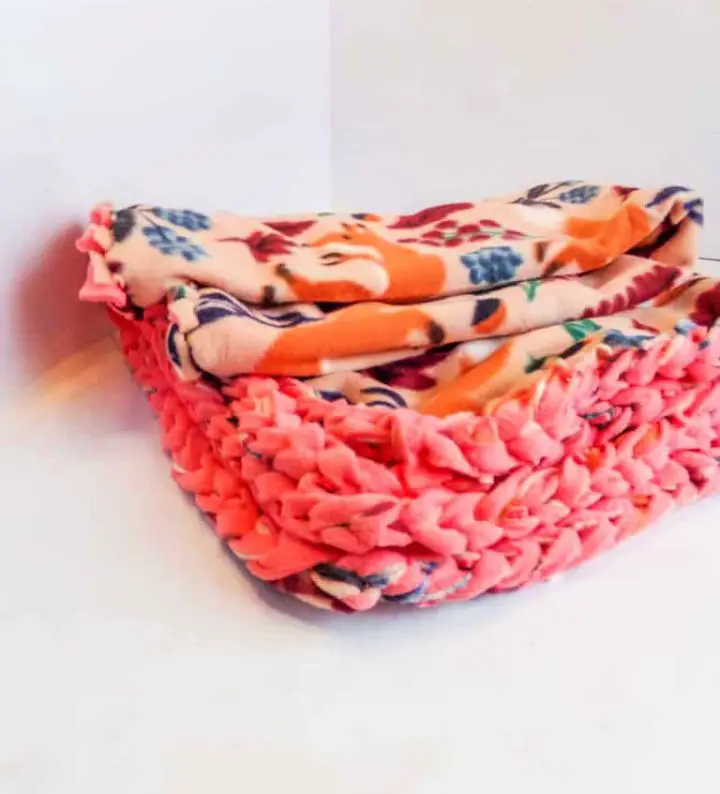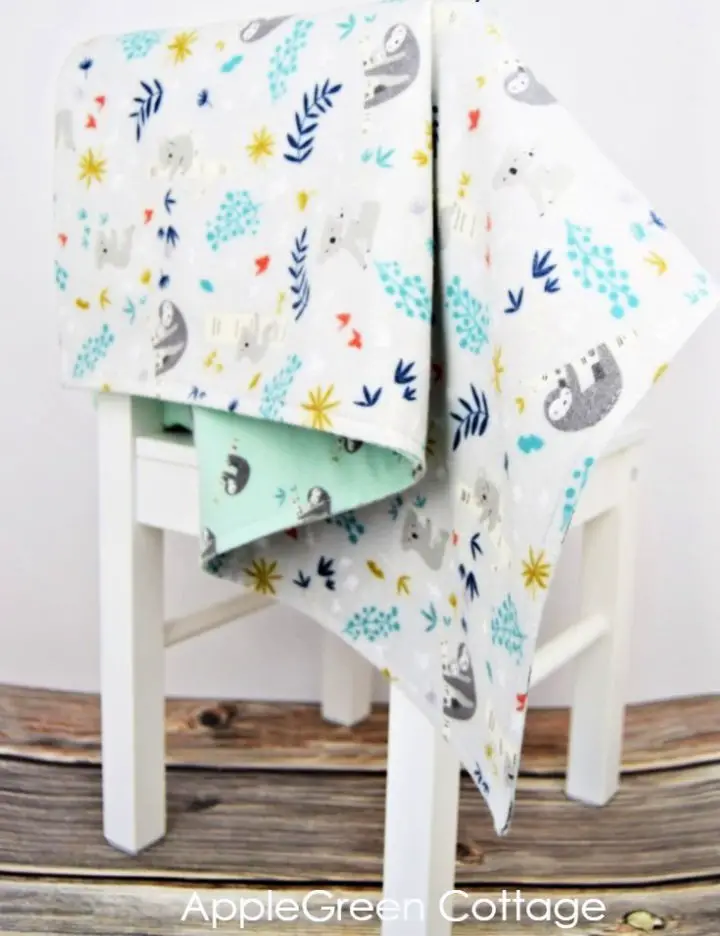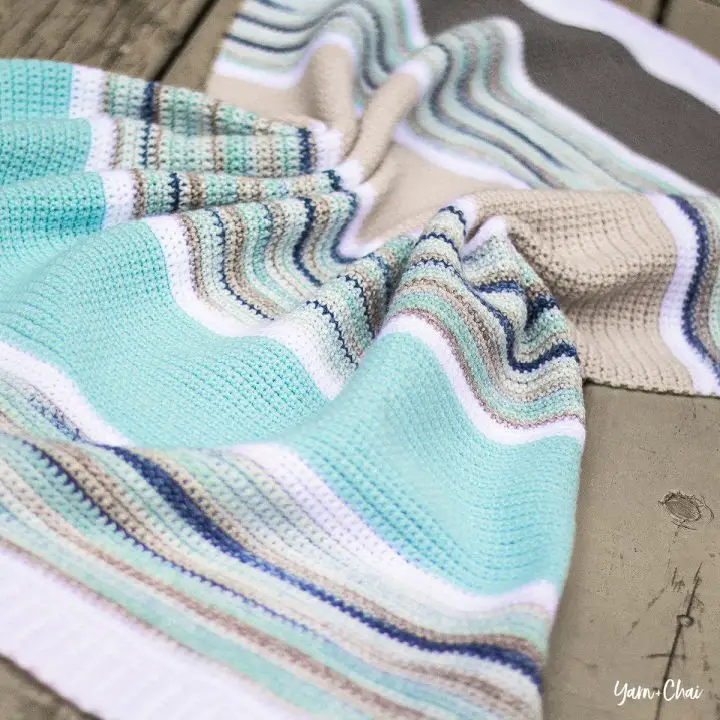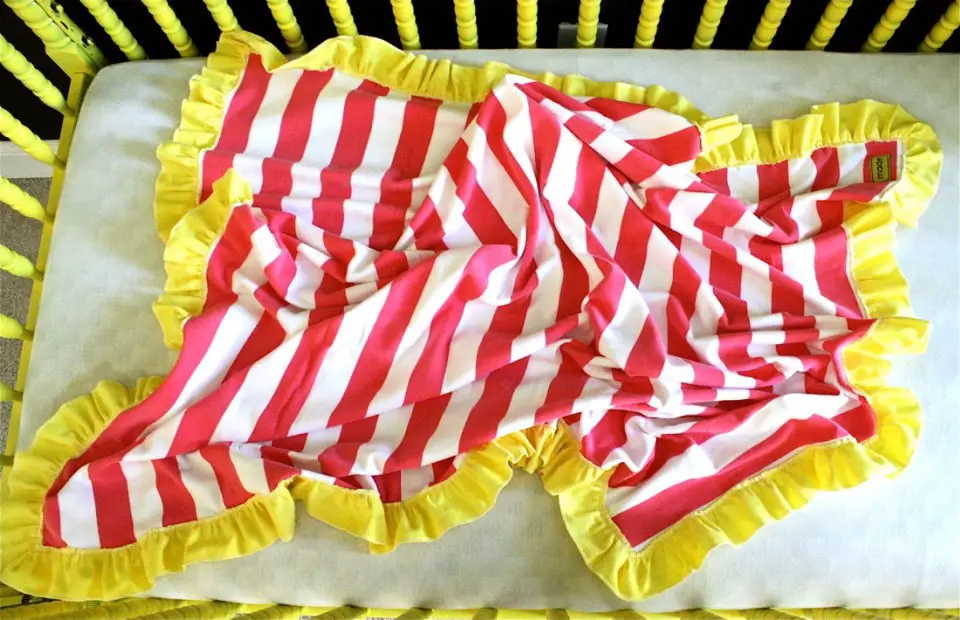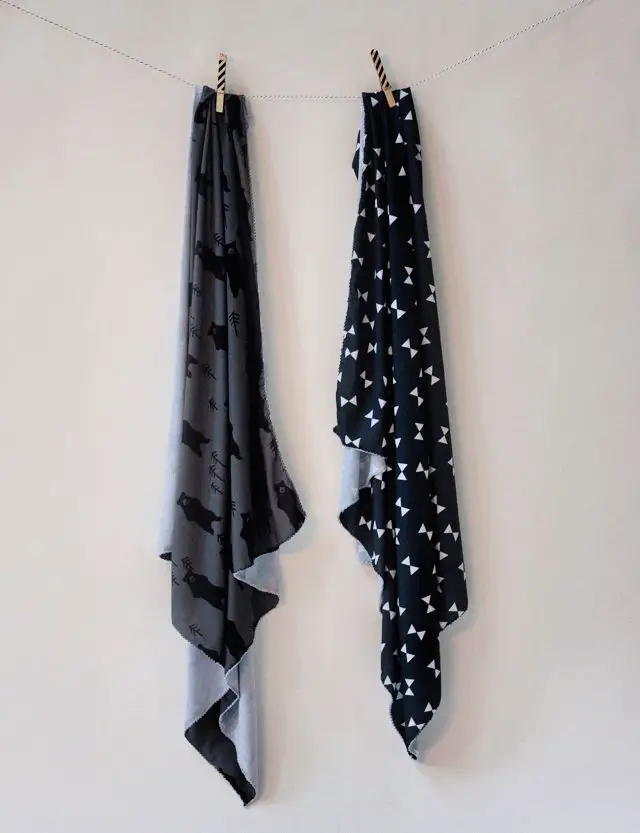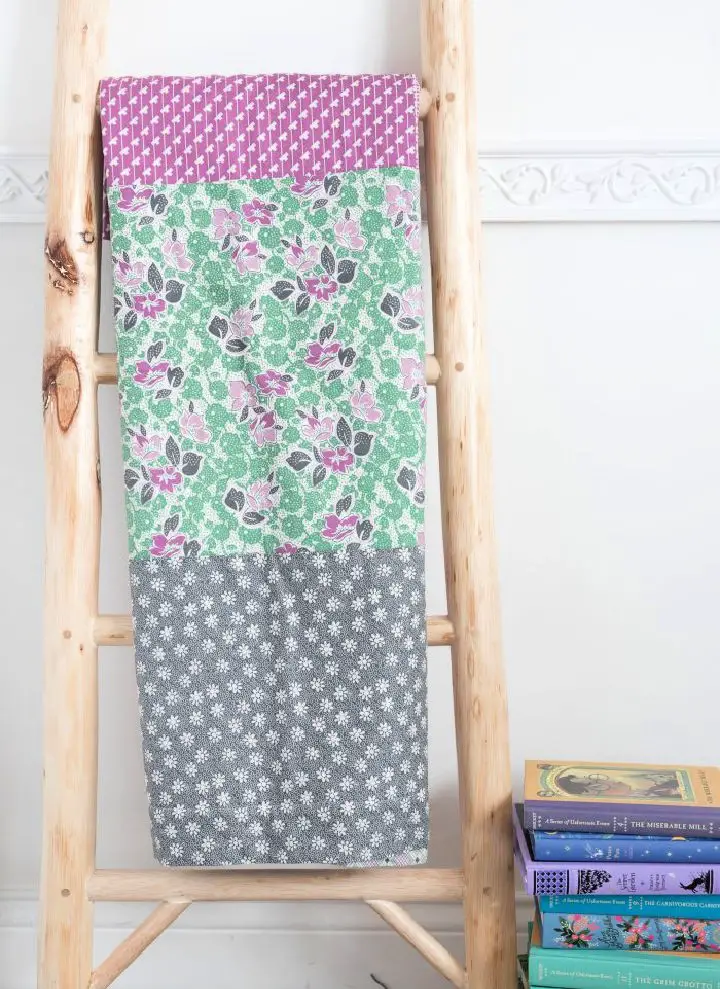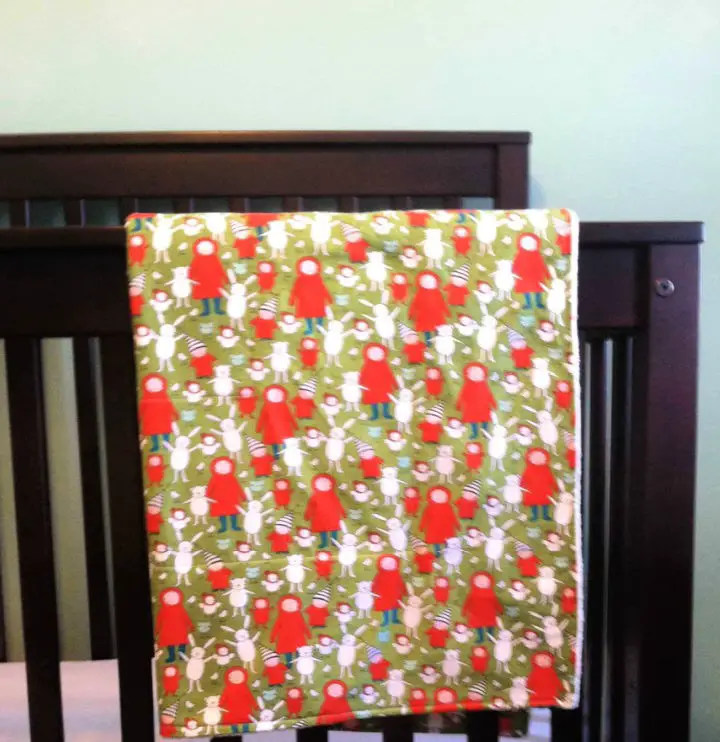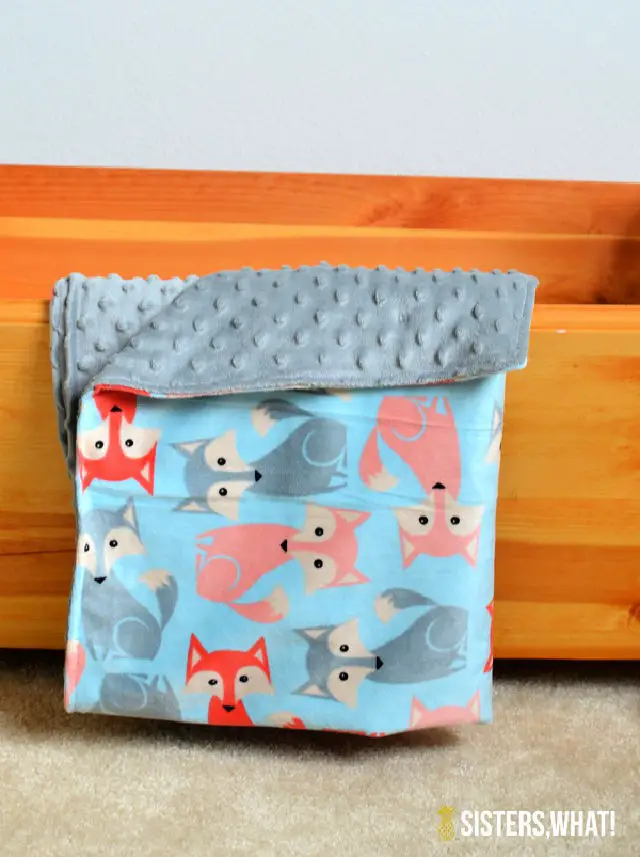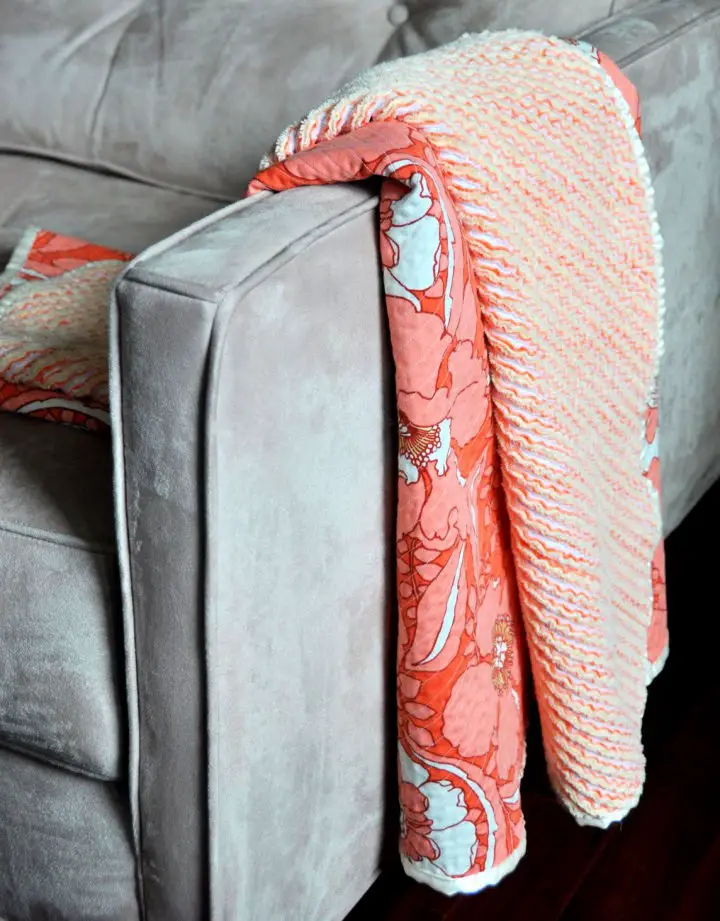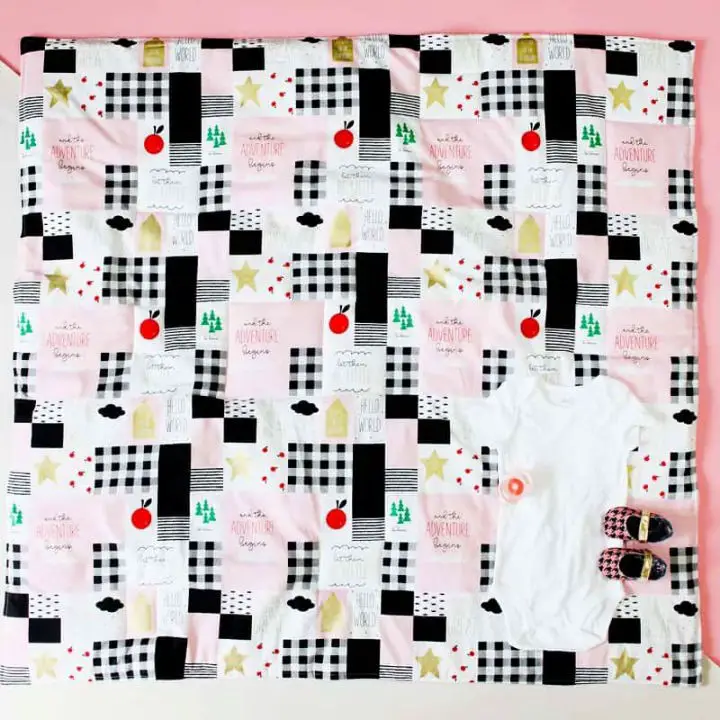
Crafting a DIY baby blanket is an endearing way to add a personal touch to a fundamental necessity for your little one. With 20 unique patterns at your disposal, creating a warm and cozy blanket becomes a feasible project for anyone eager to create something special. These patterns cater to various styles and skill levels, ensuring that every crafter can find a design that suits their abilities and preferences. By following our step-by-step guide on making a baby blanket, you’ll not only learn the fundamentals of selecting the right materials but also gain a comprehensive understanding of the process, from preparing the fabric to adding the finishing touches to your creation. This approach helps break down the process into manageable steps, making it accessible and clear for crafters at any level of experience. Ready to turn these DIY baby blanket patterns into a reality? Continue reading to discover insights that will elevate your crafting skills.
Why Make a DIY Baby Blanket?
While store-bought baby blankets have their appeal, crafting your own DIY blanket offers a unique set of benefits that make it a worthwhile endeavor. One of the most significant advantages is the personal touch you can bring to the project. By making the blanket yourself, you can infuse it with love and care, allowing you to personalize it to suit the baby’s nursery theme or incorporate special wishes and hopes for the newborn.Another key benefit is the level of quality control you have when working on a DIY blanket. You have the freedom to choose high-quality materials that are not only soft and durable but also free from harmful chemicals. This means you can rest assured that your gift will be safe and healthy for the baby to use.Making a DIY baby blanket can also be a cost-effective option compared to purchasing a high-end, store-bought blanket. With numerous free patterns available online, all you need to invest in is the materials themselves. And let’s not forget the sense of satisfaction and accomplishment that comes from creating something with your own hands – it’s a unique gift that will be treasured for years to come.In addition to these practical benefits, crafting a DIY baby blanket can also have therapeutic effects. The act of making something by hand can be incredibly relaxing and calming, providing a creative outlet and a sense of fulfillment upon completion.Finally, choosing sustainable and organic fabrics when making your DIY baby blanket allows you to create an eco-friendly product that not only benefits the baby but also contributes positively to the environment. Overall, the effort and love put into making something by hand can make a DIY baby blanket much more special than anything bought from a store – it’s a meaningful project that benefits both the maker and the recipient.
Choosing the Right Fabric for Your DIY Baby Blanket
When creating a baby blanket, you’re not just expressing your love; you’re also investing in the comfort, safety, and longevity of the little one it’s meant to wrap. A crucial aspect of this project is selecting the perfect fabric. In this context, we’ll delve into the various fabric types, exploring their characteristics and benefits. Additionally, we’ll touch on key considerations for choosing colours and patterns that will make your blanket truly special.
Fabric Types for Baby Blankets
Cotton, flannel, and Minky are three popular fabrics used in baby clothing and accessories. When it comes to choosing the right fabric for your little one, there are several factors to consider. For instance, cotton is known for its breathability, softness, and gentle texture on the skin. It’s also easy to wash and durable, making it a great choice for everyday wear. However, it does have one drawback – it can shrink if not pre-washed before sewing, which may affect its overall fit. Flannel, on the other hand, offers warmth and softness, making it perfect for colder climates. It’s also relatively easy to work with, but it may pill after several washes, losing some of its initial softness over time. Minky is another popular option that provides an extremely soft and plush texture, ideal for sensory development in babies. While it can be a bit slippery to sew, the luxurious feel it offers makes it a great choice for special occasions or everyday wear. One thing to keep in mind with Minky is that it tends to hold heat, which may not be suitable for warmer climates. Ultimately, each fabric has its own unique benefits and drawbacks, and the right choice will depend on your specific needs and preferences.
Choosing Colors and Patterns
When crafting a DIY baby blanket, it’s essential to prioritise both safety and comfort. To ensure your creation meets these criteria, start by opting for fabrics that are dyed using non-toxic, baby-safe dyes. Organic materials often fit the bill, providing a sense of reassurance.In terms of patterns, aim for visually stimulating yet unobtrusive designs that won’t overwhelm the baby. Pastel shades and simple motifs like stripes or polka dots can be excellent choices. Conversely, avoid fabrics featuring embellishments like buttons or sequins that could pose a choking hazard. Instead, prioritise simplicity and safety above all else.By selecting the right fabric type and considering the safest colours and patterns, you can create a blanket that’s not only cherished but also safe for your little one.
Selecting a Sewing Pattern for Your DIY Baby Blanket
When embarking on a DIY baby blanket project, many find the initial step – selecting the ideal sewing pattern – overwhelming. This crucial decision not only determines the overall complexity of the project but also affects the amount of time required to complete it. A comprehensive understanding of the various types of sewing patterns and their corresponding difficulties can empower you to choose a pattern that harmoniously aligns with your sewing proficiency and available timeframe, ensuring a satisfying experience regardless of whether the blanket is for personal use, a gift, or a cherished keepsake.
Types of Sewing Patterns and Their Difficulty Levels
When starting out with sewing or looking for a quick project, beginner-friendly patterns are the way to go. Characterized by simple shapes and minimal piecing, these projects are designed to be fast and easy to complete. Look for patterns labeled as ‘beginner’ or ‘easy’, and those that recommend straightforward fabrics.
Rag quilts offer a slightly more challenging yet accessible option. By sewing together squares of fabric, you’ll create a cozy quilt with fluffy fringed edges. The beauty of rag quilts lies in their simplicity and the textured finish they provide. For sewers with basic skills, rag quilts are an excellent choice.
For those looking to add some creative flair, appliqué patterns offer endless possibilities. This technique involves sewing smaller fabric pieces onto a larger piece to create designs, ranging from simple shapes to intricate compositions. While basic appliqué can be beginner-friendly, more complex designs may require intermediate sewing skills. Choose an appliqué pattern that suits your skill level and time commitment.
Tips for Choosing the Right Pattern
Before diving into a baby blanket project, take the time to assess your sewing skills honestly. If you’re just starting out, there’s no need to feel intimidated – simple projects can be a great way to build confidence. Consider how much time you have available for the project and choose a pattern that aligns with your schedule. A few hours of dedicated work can result in a finished product that you’ll be proud of.When searching for patterns online, read reviews from other sewers who’ve completed similar projects. This will give you valuable insight into the pattern’s difficulty level and any potential roadblocks you might encounter. Think carefully about the type of fabric recommended by the pattern, ensuring it’s easily accessible to you and comfortable to work with.Finally, consider the blanket’s intended use. Will it be a cozy addition to a nursery or a decorative piece for display? This can help guide your decision-making process when selecting a pattern. With a clear understanding of your skills, time commitment, and fabric choices, you’ll be well-equipped to choose a baby blanket pattern that brings you joy and satisfaction.
How to Make a Baby Blanket
Creating a snug baby blanket is easier than you think, even if you’re new to sewing. This step-by-step guide helps you craft a soft, lovable blanket for the tiny humans in your life without needing advanced equipment. Just grab some fabric scissors and follow along, as this project requires minimal tools and yields a treasured keepsake.
Materials Needed
To embark on this project, ensure you have the following materials readily available: A total of 1.75 yards of fabric – specifically, 1.5 yards of cotton print fabric and 0.25 yards of minky fabric. Additionally, gather your trusty tools including fabric scissors, sewing pins, a reliable sewing machine with an adjustable seam allowance setting that accommodates at least 5/8-inch seams, and coordinating thread to tie everything together.
Step-by-Step Instructions
Before beginning your project, it’s essential to prepare the fabrics by pre-washing and ironing both the cotton and minky materials. This step prevents any potential issues with shrinking or warping that could occur after the blanket is made. Once the fabrics are prepared, lay the cotton fabric flat on a large surface, such as a floor or table, and place the minky fabric on top, aligning the right sides together so that the patterns or pretty sides face each other. Smooth out any wrinkles or bubbles to ensure a smooth surface.Next, measure and cut the fabrics according to your design, taking care to trim the minky fabric to match the cotton fabric without requiring precise measurements. The key here is to maintain the correct alignment of the patterns or designs on both fabrics.To prevent the minky fabric from stretching or becoming misshapen as you sew, pin the edges together carefully around the perimeter, starting from one side and working your way across. Make sure to smooth out any wrinkles or bubbles before pinning to ensure a crisp finish.Once the pins are in place, set up your sewing machine with a 5/8 seam allowance and begin sewing the fabrics together, backstitching at the start to secure the thread. Leave a 6-inch gap unsewn for turning the blanket right-side out later. When sewing, keep the minky fabric on the bottom to allow the feed dogs to pull it through evenly, and remove the pins as you sew.After completing the sewing, trim the corners close to your stitching without cutting the stitches to reduce bulk, and then trim around the rest of the blanket’s edge, being careful not to cut too close to the opening. Turn the blanket right-side out through the unsewn gap using a thin tool or your fingers to push out the corners neatly.Finally, pin the opening shut, ensuring the edges inside are folded in evenly, and topstitch the entire perimeter of the blanket using a 1/4 seam allowance, which will also close the gap. This stitching will be visible, so choose coordinating thread that complements the overall design.
Finishing Touches
Before considering your blanket complete, thoroughly inspect its surface to identify any stray pins that may have been overlooked during the assembly process. Additionally, take note of any uneven edges or rough seams that require attention. Once you’ve addressed these minor issues, give your finished blanket a meticulous ironing to impart a polished sheen. Concentrate on the seams and edges as you work to ensure a professional-looking finish.
Video Tutorial
While the written guide provides a detailed and structured approach to making a handmade baby blanket, it’s equally important to have a visual aid that complements the text. In fact, watching a step-by-step video tutorial like the ‘Easiest Baby Blanket Ever’ on YouTube can make the process even more accessible and easier to grasp. This harmonious blend of written instructions and visual guidance ensures that the techniques being discussed are not only well-understood but also easily replicable. Furthermore, creating a handmade baby blanket is an incredibly rewarding project, offering the added benefit of infusing your gift with a personal touch that’s sure to make it all the more special. Whether you’re crafting one for your own little one or gifting it to someone else, this guide’s simplicity and ease of use guarantee a beautiful result every time.
Embellishments and Personalization for Your DIY Baby Blanket
Transforming a DIY baby blanket into a treasured keepsake is all about incorporating personal touches that make it truly unique. To achieve this, consider the following creative ideas and expert tips for customizing and embellishing your baby blanket, ensuring it remains an endearing possession for years to come.
Ideas for Adding Cute Touches
Adorn your baby blanket with an array of decorative elements that add a touch of whimsy and sophistication. Thin ribbons can be sewn around the edges or formed into loops at the corners, lending a playful air. Opt for soft, gentle hues that harmonize with the blanket’s color palette.
Elevate your design game with embroidery, whether by hand or machine. Simple shapes like stars and hearts can create charming motifs, while more intricate designs inspired by nursery themes can add an extra layer of visual interest.
Fabric appliques are another delightful way to inject personality into your baby blanket. Cut out shapes like animals, letters, or flowers from soft, washable fabrics in contrasting colors to add a pop of vibrancy and whimsy.
Tips for Personalizing the Blanket
When it comes to incorporating the baby’s name or initials into the blanket, there are several options to consider. Embroidery is one approach, allowing you to add a personal touch with thread. Alternatively, iron-on letters can be used to achieve a similar look without requiring embroidery skills. These letters can be found at most craft stores.In terms of placement, the corner is a classic spot for adding the name or initials, but the center or along one edge can also create a visually appealing design. The font and size you choose should complement the overall style of the blanket, with simple block letters being a versatile option that works well for both boys and girls.To ensure the lettering stands out against the background of the blanket, make sure to select a color that provides sufficient contrast. By considering these elements, you can create a unique and special baby blanket that is truly one-of-a-kind. The details are what make all the difference in achieving a beautiful design.
Washing and Care Instructions for Baby Blankets
To maintain the softness, cleanliness, and coziness of your baby’s blanket, it’s essential to follow the right care routine. The type of fabric used affects how it should be washed and maintained, so a tailored approach is necessary. This straightforward guide provides you with the key insights you need to keep those blankets in top condition for your little one.
Cotton Blankets
To keep your cotton blankets looking their best, follow these simple washing instructions: machine wash them in warm water using a gentle cycle and mild detergent. Be cautious when it comes to bleach, as it can cause fibers to weaken and colors to fade. Once the cycle is complete, tumble dry the blanket on low heat and remove it promptly to prevent wrinkles from setting in.
When it comes to maintaining the softness of your cotton blankets, use fabric softeners sparingly, as excessive use can lead to fabrics becoming less absorbent over time. If you find that your blanket has become stiff, try adding a half-cup of white vinegar to the rinse cycle – this natural approach can help to soften the fabric without leaving any harsh chemical residues behind.
Fleece Blankets
For optimal care of your fleece blankets, start by washing them separately in cold water on a gentle cycle. When it comes to detergents, stick with mild options that won’t strip away the fabric’s natural texture or compromise its color. And remember, bleach is a definite no-go when it comes to preserving the quality of your fleece.When it’s time to dry, opt for low heat settings or air drying methods to prevent pilling and maintain the softness you love. If you do need to tumble dry, be sure to keep the heat setting low to avoid damaging the fabric.To keep your fleece blankets looking their absolute best, it’s also important to avoid ironing them altogether – high heat can melt or damage the material. Instead, after washing, give the blanket a good shake to redistribute the fibers and remove any excess water. Then, simply air dry as usual. By following these simple tips, you’ll be able to enjoy your fleece blankets for years to come.
Wool Blankets
To keep your wool blankets in top condition, it’s essential to follow proper washing instructions. When hand washing, use cold water and a gentle wool cleaner to prevent damaging the fibers. If you prefer machine washing, opt for a wool cycle and cold water settings to minimize agitation. Once clean, lay the blanket flat to dry, away from direct sunlight or heat sources that could cause fading or shrinkage.
To maintain the softness of your wool blankets, it’s crucial to handle them gently during the drying process. Avoid wringing or twisting the fabric, as this can disrupt the natural fibers and lead to pilling or snagging. Instead, use gentle pressure to squeeze out excess water without applying too much tension.
When choosing a detergent, be sure to select a wool-specific option that is designed to help maintain the blanket’s natural oils and softness. By following these simple steps, you can enjoy your wool blankets for years to come.
Knitted or Crocheted Blankets
To ensure the longevity of your handmade blankets, it’s essential to follow proper washing and drying instructions. When cleaning, opt for a gentle cycle in a laundry bag to prevent damage from snagging or stretching. Use cold water and a mild detergent to preserve the fibers’ natural softness.
When it comes time to dry, lay the blanket flat on a clean towel to air-dry. If necessary, gently reshape the fabric as it dries to maintain its original texture. By following these steps, you’ll be able to enjoy your cozy blankets for years to come.
To further prolong the softness and suppleness of your handmade blankets, take care when storing them. Avoid hanging them up, as this can cause distortion or stretching over time. Instead, fold them neatly and store them in a secure location to maintain their shape and texture.
General Tips for All Baby Blankets
To preserve the softness and integrity of your baby’s blankets, it’s crucial to attend to spills and stains promptly to prevent them from setting in. This proactive approach will save you the hassle of dealing with stubborn stains down the line.
When it comes to storage, a cool, dry environment away from direct sunlight is ideal for maintaining their quality. This simple precaution will safeguard against fading and deterioration, ensuring your blankets remain as plush and inviting as when they were first brought home.
By incorporating regular washing and proper storage into your routine, you’ll be able to keep your baby’s blankets in top condition, always ready to provide that extra layer of comfort and warmth whenever needed. By following these simple yet effective tips, you can rest assured that your little one will have a constant companion in their cozy blanket.
FAQS: Making DIY Baby Blankets
To provide a comprehensive foundation for your DIY baby blanket-making adventure, we’ll address some of the most frequently asked questions in this section. This will empower you with the necessary knowledge and confidence to tackle this fulfilling craft project.
What materials do I need to make a baby blanket?
To create a fundamental baby blanket, you’ll require the following basic materials and tools:
* A total of approximately 1.75 yards of cotton print fabric for the outer layer
* Roughly 1.25 yards of soft minky fabric for the inner layer or backing material
* A good pair of fabric scissors designed specifically for cutting through various fabrics
* A set of sewing pins with sharp points and sturdy heads to secure your fabric in place as you work
* A functional sewing machine that can handle a minimum 5/8 inch seam allowance, allowing for smooth and accurate stitching
* A matching thread color to coordinate with the rest of your blanket’s design
How do I choose the right fabric for a baby blanket?
In choosing fabrics for your little one’s needs, it’s essential to prioritize softness, durability, and ease of cleaning. Opting for materials like cotton and minky can be a great starting point, as they not only provide gentle comfort against the baby’s skin but also withstand repeated washing cycles. Furthermore, be mindful of selecting fabric options that are free from chemicals that could potentially harm your child’s sensitive skin.
Can I make a baby blanket without a sewing machine?
No-sew baby blankets are a great option for those who don’t have experience with sewing. One popular way to create these cozy blankets is by using fleece or minky fabric. These materials are soft, comfortable, and easy to work with, making them perfect for DIY projects. To make a no-sew baby blanket, you’ll typically cut the fabric into strips or shapes, then tie or braid the edges together. This process is straightforward and doesn’t require any sewing skills, making it accessible to crafters of all levels.
How do I wash a DIY baby blanket?
When handling your handmade items, it’s crucial to follow the guidelines specified for each type of fabric used. For cotton and minky materials, a gentle machine wash cycle with a mild detergent is recommended, followed by a tumble dry on low setting. To prevent damage to the fabric, it’s essential to avoid high heat settings. By adhering to these care instructions, you can ensure your creations remain in great condition.
How big should a baby blanket be?
When it comes to choosing a blanket’s size, there are several factors to consider. The most common standard baby blanket size is around 30 inches by 40 inches, making it versatile enough for swaddling, snuggling, and even stroller use. However, the size can be adjusted based on personal preference or specific needs, allowing you to customize the blanket to your unique requirements.
What is a self-binding baby blanket?
A self-binding baby blanket employs an innovative approach where the backing fabric is deliberately extended beyond the main fabric, subsequently folding over to the front and creating a border that mimics traditional binding. This technique yields a crisp, polished finish, eliminating the necessity for supplementary binding materials.
How can I personalize a DIY baby blanket?
When it comes to personalizing a baby blanket, there are several ways to make it truly unique. One approach is to select fabrics that fit with the baby’s nursery theme or incorporate colors and patterns that hold special meaning for the family. Additionally, adding appliques, embroidery, or hand-stamping names and personalized messages can add an extra layer of thoughtfulness. By incorporating these elements, you can create a blanket that not only provides warmth and comfort but also serves as a meaningful keepsake.
Is it cheaper to make or buy a baby blanket?
When it comes to creating a baby blanket, many people assume they need to break the bank by purchasing an expensive store-bought option. However, with the abundance of free patterns and tutorials available online, the main investment lies in the materials themselves. Fortunately, these materials can often be found on sale or purchased with coupons, making the process even more cost-effective.
Beyond the monetary benefits, creating a DIY baby blanket is also an opportunity to add a personal touch to a gift or your baby’s nursery. It’s a heartfelt endeavor that allows you to put love and care into every stitch, making it a truly unique and special creation.
20 DIY Baby Blanket Patterns (How to Make a Baby Blanket)
Embark on a creative journey by crafting unique DIY baby blanket patterns from the comfort of your own home. Explore a curated collection of 20 stunning designs, each one a testament to the beauty of handmade. With these easy-to-follow tutorials, you’ll be well on your way to creating a truly special gift for the little ones in your life.
How to Make a Baby Blanket
Crafting a baby blanket is an endearing project that can bring warmth to new parents or create a special keepsake for your own nursery. By following the steps outlined in Adventures of a DIY Mom’s tutorial on making a mitered corner baby blanket, you’ll be able to simplify the process using a self-binding method. This innovative technique ensures that once you’ve completed the sewing and turning process, you’re left with a neatly finished edge – a true crafting miracle! The comprehensive guide includes a list of required materials, step-by-step instructions, and a supporting video for visual learners. With options for various fabrics, including cozy flannel and plush minky, you can personalize the blanket to suit your style. As you work on this project, get ready to create something beautiful and functional that will be cherished for years to come.
DIY Self-Binding Minky Baby Blanket
Creating a personalized self-binding minky baby blanket is a thoughtful and budget-friendly project that can bring joy to both you and your little one. With Make It & Love It’s comprehensive guide, you’ll be able to create a soft and snuggly blanket that’s perfect for cuddles and naptime. The tutorial takes you through every step, from choosing the right minky fabric to adding a charming appliqué detail that gives it a unique touch.The self-binding technique ensures a professional finish, and the included tips on working with minky fabric make the process easy and enjoyable. Whether you’re making it as a gift or for your own nursery, this minky blanket tutorial is an engaging and practical craft project that’s perfect for anyone who loves sewing.
Making a Self Binding Baby Blanket
Immerse yourself in the world of DIY crafting by learning how to create baby blankets with Sew Much Ado’s straightforward tutorials. This self- binding technique transforms ordinary fabric into a treasured keepsake, making it an ideal choice for personalized gifts. With step-by-step instructions, accompanied by visuals and video guidance, you’ll gain confidence in sewing mitered corners and self-binding edges. The required materials are minimal – 1.5 yards of backing fabric and 1.25 yards for the top – keeping costs low. To add visual interest, experiment with contrasting colors or textures. This project is suitable for crafters of all skill levels and can be completed in under an hour, providing a fulfilling experience and a beautiful outcome.
No Sew DIY Baby Blanket
For a thoughtful and handmade gift that doesn’t require sewing skills, creating a cozy no-sew baby blanket from Happiest Camper’s guide is an excellent option. Using only sharp scissors, fleece or minky fabric, and a little time, you can craft a soft, durable, and braided-edged blanket perfect for a baby shower or nursery addition. This DIY project allows for personalization and results in a machine-washable keepsake that’s both beautiful and functional, making it a cherished gift for years to come.
Free Baby Blanket Sewing Pattern
To create a cozy and soft baby blanket, AppleGreen Cottage provides a comprehensive tutorial that simplifies the process of crafting a charming baby blanket from flannel. The guide covers essential details such as determining the ideal size for a baby blanket, selecting the best quality flannel, and walking you through a step-by-step process to ensure a professional finish. With practical tips and clear instructions, this tutorial is perfect for anyone seeking to sew a warm and snug blanket that will be cherished by new parents. Whether you’re looking to create a thoughtful gift or a treasured keepsake for your own child, this tutorial provides everything you need to get started. Start sewing today and craft a baby blanket that’s sure to impress at any baby shower or as a special gift for your little one.
Make a Patchwork Baby Blanket in 2 Hours
Transform ordinary gifts into extraordinary ones with these simple yet thoughtful homemade baby blanket ideas, ideal for welcoming new parents or adding a personal touch to your little one’s nursery. Inspired by The Yellow Birdhouse, this DIY patchwork baby blanket tutorial is a 2-hour sewing project that requires only four fat quarters and some plush minky fabric. By following the clear-cutting and assembly instructions, you’ll be able to create a charming, soft, and practical keepsake that any child would adore. Get your materials ready and let’s get crafting an adorable and cozy gift for the tiny tots in your life.
Free Crochet Baby Bean Baby Blanket Pattern
Crafting a cozy Baby Bean Baby Blanket using the free crochet pattern from Left in Knots is an excellent way to create a charming and personalized gift for any nursery. The unique design features bulky yarn and textured baby bean stitches, making it perfect for a unisex blanket that can be easily matched with any décor. By combining Red Heart Soft Essentials yarn, a 7.0mm crochet hook, a yarn needle, and scissors, crocheters can create a soft and snuggly blanket measuring approximately 36″x36″. With step-by-step instructions, gauge details, and finishing tips provided, this pattern is designed to be easily followed by beginners and experienced crocheters alike. Whether you’re making it for a special occasion or just to treasure with your little one, the Baby Bean Baby Blanket is sure to become a beloved creation.
Summer Boardwalk Baby Blanket Pattern
Indulge in the art of DIY baby blanket crafting by exploring unique and personalized gift ideas. One such project that embodies relaxation and serenity is Yarn + Chai’s simple yet soothing crochet design, perfect for unwinding after a busy day. The Summer Boardwalk Baby Blanket pattern, comprising single crochet stitches only, yields a sleek and modern aesthetic ideal for those who appreciate clean lines and contemporary flair. The use of Hobby Lobby’s Soft Delight yarn ensures a gentle touch, making it an excellent choice for new mothers and their little ones. With easy-to-follow instructions and budget-friendly yarn options, you can create a charming and cozy blanket that exudes style and softness. This minimalist design showcases the beauty of simplicity in crochet craftsmanship.
Handmade Chevron Chenille Baby Blanket
Craft a Chevron Chenille Baby Blanket with ease by following our comprehensive guide. This step-by-step tutorial takes the complexity out of transforming chevron-patterned fabric into a soft, frayed chenille masterpiece perfect for little ones. By combining lightweight twill fabric with multiple layers of cotton flannel, you’ll create a cozy and stylish blanket that’s as unique as it is comfortable. Our instructions cover stitching the chevron pattern, preparing the layers, and binding the edges to achieve a polished finish. As a bonus, sewing enthusiasts will appreciate the detailed tips on achieving the perfect chenille texture.
Making Your Own Ruffle Baby Blanket
Imagine wrapping your little one in the ultimate cozy creation – a striped ruffle blanket that’s not only adorable but also a treasured handmade gift. Made Everyday’s tutorial makes it easy to bring this vision to life, even without a serger. By following their step-by-step guide, you’ll learn an alternative method for creating a charming ruffled border using just one layer of fabric. To get started, gather approximately 1 1/4 yards of blanket material and 1/2 yard of border fabric. As you work through the instructions, cutting, ruffling, and sewing your way to this snuggle-worthy blanket, you’ll discover that adding a personal touch makes it an even more special gift for a baby shower or a comforting addition to a crib. With clear and helpful directions, creating this cozy blanket is an enjoyable and straightforward process.
Simple DIY Oversized Baby Blanket
Transform a simple DIY project into a thoughtful gift with Rae Ann Kelly’s comprehensive guide to creating a cozy oversized baby blanket. This versatile tutorial caters to sewists of all levels and offers two distinct approaches: a traditional sewing method and a no-sew option that utilizes jersey knit fabric. The result is a soft, stretchy, and adorable blanket that can be personalized to make a heartfelt gift for any new mom or baby. With the ability to finish edges using a regular sewing machine or opt for a fray-free, hassle-free alternative, this project is as practical as it is charming. Head to Rae Ann Kelly’s website to embark on this heartwarming adventure and create a blanket that will surely be treasured.
Self-Binding Minky Baby Blanket Tutorial
Create stunning keepsakes for your little one with easy-to-follow sewing patterns. One such pattern is the cozy Minky baby blanket tutorial on The Polka Dot Chair, which showcases a self- binding technique that’s perfect for handmade gifts. With no prior sewing experience required, this project allows you to focus on beautiful fabric prints without worrying about intricate cutting. Step-by-step guidance takes you from material selection to executing the self-binding method, resulting in a charming and practical blanket. The tutorial’s clear instructions and helpful tips ensure a rewarding and enjoyable making process.
Swaddle Baby Blanket – Free Pattern
Create a snug and personalized receiving blanket for your little one or as a thoughtful gift for a baby shower with Jennie Masterson’s comprehensive DIY guide. This beginner-friendly project is designed to be easy to follow, allowing you to craft a charming and functional keepsake that can be paired with matching burp cloths for a delightful baby set. The process is straightforward: pre-wash the fabric, cut it to size, round the corners, and sew the edges. Jennie also provides a free PDF pattern as an added convenience, or you can use her clear measurements if you prefer. With her step-by-step guidance, you’ll have a cozy receiving blanket ready in no time, making it perfect for wrapping your baby snugly or presenting it as a thoughtful gift.
DIY Mitered Corners Baby Blanket
A cozy baby blanket with mitered corners is a delightful sewing project that adds a personal touch to any gift. For those eager to learn this craft, Jan Howell’s tutorial on You Make It Simple provides a clear step-by-step guide, accompanied by a free video tutorial. This comprehensive resource empowers beginners to combine flannel prints and achieve crisp, charming corners with ease. Perfect for DIY enthusiasts, this blanket can be sewn in approximately 30 minutes, making it a cherished keepsake that’s sure to become treasured.
Homemade Hand Stamped Baby Blanket
For beginners looking to master easy baby blanket sewing techniques, our step-by-step guide is the perfect place to start. Making a personalized baby blanket is a thoughtful gift idea for any occasion, whether it’s a baby shower or welcoming a new addition to the family. At Lemon Thistle, we’re excited to share a DIY hand-stamped baby blanket tutorial that allows you to add a custom touch to a cozy muslin baby blanket. This simple yet creative project requires just a few household items and materials like fabric paint, craft foam, and soft fabrics. The best part? You can choose any shape or monogram to stamp, making it an excellent project for those who enjoy adding a personal flair to their gifts. When using soft fabric paints like Tulip Soft Matte, the finished blanket remains incredibly soft against delicate baby skin. Before you start, be sure to prewash the blanket to avoid any warping after stamping, and let your creativity shine as you design a pattern that’s uniquely yours.
How to Make a Baby Blanket
Crafting a soft and cozy baby blanket is an incredibly rewarding project that can bring joy to both you and your little one. Mary Martha Mama’s easy-to-follow DIY Baby Blanket Tutorial makes the process accessible by providing clear, step-by-step instructions. With just a sewing machine, basic cutting tools, some fabric, and thread, you can create a handmade stroller-size blanket that will be treasured for years to come. The tutorial walks you through a straightforward method, covering essential techniques such as cutting, pinning, sewing, and quilting, allowing you to produce a beautiful, durable blanket. From selecting the perfect fabrics to the final touches, this tutorial simplifies the process of creating a one-of-a-kind keepsake for your baby. Take the time to indulge in this creative endeavor and make something truly special for your little bundle of joy today.
Easy DIY Minky and Flannel Baby Blanket
Are you prepared to craft a snug and one-of-a-kind baby blanket? Sisters, What! presents a step-by-step sewing guide to assist in creating a warm and thoughtful gift for little ones. To begin, gather two yards of flannel or minky fabric – feel free to combine patterns for an added layer of personality. Simply sew the edges, turn the right side out, and add a top stitch for a polished finish. With materials often available at a discount and a process that’s easy to follow, you can effortlessly produce a heartfelt blanket that will become a treasured keepsake. By diving into this tutorial and starting your sewing project today, you’ll be able to create a personalized and budget-friendly gift that’s sure to be cherished for years to come.
Heirloom Cut Chenille Baby Blanket Instructions
Get creative with these handmade baby blanket ideas, perfect for gifting or preserving as a treasured keepsake. Our comprehensive guide will walk you through the process of crafting an heirloom-quality cut chenille baby blanket, ideal for sewing enthusiasts. From selecting fabrics to layering and quilting, our step-by-step tutorial ensures a charming vintage finish. Whether for personal use or as a heartfelt present, your finished product is sure to be cherished for years to come.
How to Sew a Baby Blanket With 2 Yards of Fabric
Transforming two yards of fabric into a soft, quilted playmat has never been easier with this straightforward tutorial from See Kate Sew. For those looking to create a thoughtful baby shower gift or a last-minute project, this guide provides step-by-step instructions on selecting coordinating prints and threads to executing precise stitching. With minimal materials and a dash of creativity, sewing enthusiasts can craft a charming and plush baby blanket that is both functional and stylish. To achieve the ultimate snug feel, be sure to use high loft batting in your creation.
Make Your Own Baby Blanket
For those eager to create a cozy baby blanket, DIY projects are an excellent way to get started. With a range of ideas suitable for both beginners and experts, crafting a charming and practical gift for newborns is more accessible than ever. Life Sew Savory’s comprehensive guide provides clear instructions on selecting complementary fabrics, sewing precise seams, and adding personal touches like yarn ties. This easy-to-follow tutorial empowers you to produce a handmade blanket that’s both beautiful and functional. Perfect for anyone with a passion for sewing, it promises a rewarding experience that results in a lovely keepsake blanket.
Conclusion:
As you complete your DIY baby blanket, remember that it’s not just a functional item – it’s an expression of love and care for the little one who will snuggle up in it. Our comprehensive guide has provided you with the skills to select the perfect materials and follow a clear, step-by-step process to create a unique and cozy blanket. Whether you’re crafting a special gift for a baby shower or adding a personal touch to your nursery, the 20 DIY baby blanket patterns we’ve explored offer endless inspiration to get you started on your next creative project. With every stitch, you’ll be creating beautiful memories that will last a lifetime.


